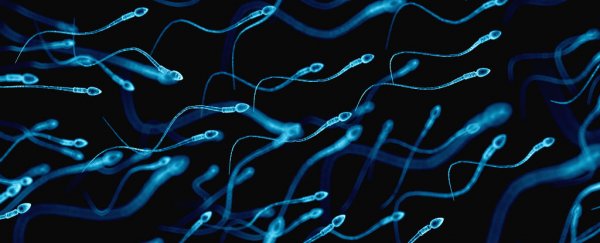Scientists have used embryonic stem cells to grow the most effective 'test-tube' sperm cells ever, demonstrating how they can be used to fertilise mouse eggs, and produce healthy, fertile offspring.
The cells are the first in the world to meet a set of criteria known as the 'gold standard' for artificial sperm, set by three fertility researchers in 2014. "The achievements of this paper are very remarkable," John Schimenti of Cornell University, one of the researchers who defined the gold standard, told New Scientist. "I'm not aware of another group having progressed this far."
The team from Nanjing Medical University in China haven't used stem cells to create actual, proper sperm cells, but they have managed to create artificial spermatids, which are immature versions of sperm that have not yet grown tails. Without tails, these spermatids can't swim, so they're injected into a mouse egg via IVF instead.
To reach the gold standard for artificial sperm, the researchers had to demonstrate that at various stages of growth, the cells were retaining a number of crucial characteristics, such as the right number of chromosomes and the right percentage of donor DNA. And that's no easy feat, as every other attempt to adequately control all the key stages of sex cell division has failed.
"Until now, researchers have struggled to prove that they have pushed cells through an important but complicated dividing process that leaves cells with only half of the father's chromosomes," Andy Coghlan reports for New Scientist.
So not only has the team appeared to master the cell division process, they were also able to produce healthy offspring - two factors that helped them meet the elusive gold standard.
"We think our work is the first to monitor and examine all requirements for successful meiosis," said one of the team, Jiahao Sha.
So how did they do it? The researchers took embryonic stem cells from male mice and exposed them to chemicals called cytokines that triggered their transformation into germ cells - a type of cell that gives rise to sex cells (eggs or sperm). While the cells were differentiating, they were placed next to testes-like tissue and exposed to the male sex hormone, testosterone, to coax them into a spermatid form.
The technique has so far only been tested on mice, so we have no idea if it'll work on humans dealing with fertility problems. But the hope is that one day, scientists could extract cells from an infertile man - such as skin or cheek cells - revert them to an embryonic stem cell-like state, and then convert those into artificial spermatids for use in IVF.
And this isn't such a crazy proposition, as Akshat Rathi reports over at Quartz: "Past research has shown that skin cells can be converted into pluripotent stem cells, which are equivalent to embryonic stem cells. These pluripotent stem cells have even been converted into precursors of sperm and egg cells."
While this could work in theory, the ethical questions of doing so means we're a very long way off actually using the technique to create humans.
"How can we tell if spermatids made in a laboratory are really of the same high quality as those made and tested by natural selection in the testis?" biologist Peter Donovan from the University of California, Irvine, who was not involved in the study, pointed out to The Verge.
Just as allowing babies to be born from genetically modified embryos brings up some serious concerns about 'designer babies' bypassing the natural order of things, if artificial sperm were used to create humans, we would have to reconcile the problem of whether or not they are inherently disadvantaged in some way, and that's no easy question to answer.
But with researchers in France and Japan following close on the heels of Sha and his team in the race towards artificial human sperm, we're going to have to figure it out sooner rather than later.
The results have been published in Cell Stem Cell.
